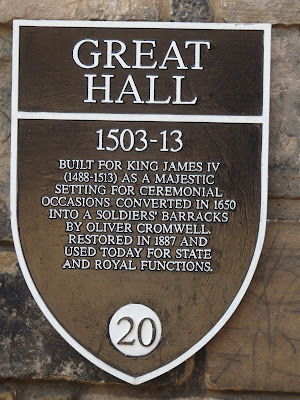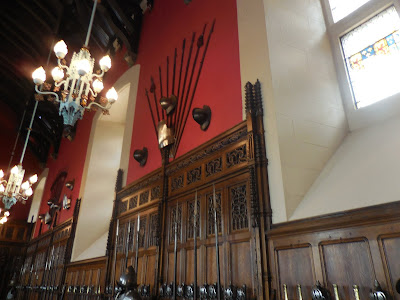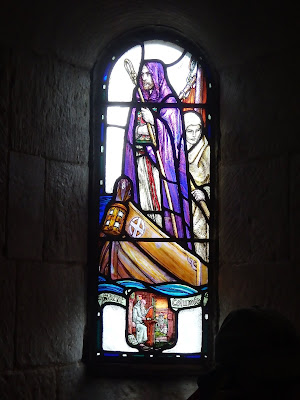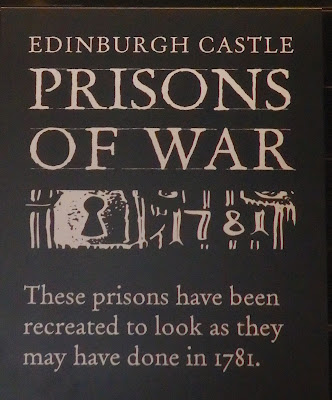 |
| The "new" gatehouse was erected in 1888. Statues of Robert the Bruce and William Wallace were added in 1929. |
 |
| We entered the Portcullis Gate with the Argyle Tower above. |
 |
| Gun at the Argyle Battery. |
 |
| View from Argyle Battery. |
 |
| National War Memorial built at the top of the hill. |
 |
| Top corner of the National War Memorial |
 |
| East side of the National War Memorial |
 |
| Back of the National War Memorial. |
 |
| South side of the Royal Palace. |
 |
| Click to enlarge for reading. The Honours were also hidden and their exact location forgotten between 1707 and 1818. |
 |
| View out over the esplanade from one of the canons |
 |
| Click to enlarge for reading. |
 |
| The hall is only one of two medieval halls in Scotland with an original hammerbeam ceiling. |
 |
| Cute way to indicate where the toilets are located. Yes, you ask for the toilets, not the restrooms in UK and the rest of Europe. |
 |
| Click to enlarge for reading. |
 |
| Views from the front of St. Margaret's Chapel |
 |
| Princes Street Gardens with the "new" (18th century Georgian) Town beyond. |
 |
| Looking northwest we get a getter view of the cartsheds, which now house the Redcoat Café and tea rooms. Behind the cartsheds, we see the hospital. To the left of the tree is the Governors house. |
 |
| In front of St Margaret's Chapel is Mons Meg. |
 |
| Click to enlarge for reading. |
 |
| The National War Museum of Scotland |
 |
| Between the hospital and the War Museum is Butts Battery. This display indicates what we can see from the battery. |
 |
| In the courtyard surrounded by the museum, hospital and Butts Battery, sits this statue to Earl Haig. |
 |
| We were there for the shooting of the One O'clock Gun. Originally shot so clocks could be synchronize, it is now just ceremonial occasion. |
 |
| My short sister standing by one of the small service vehicles by the Redcoat Café. |






































































No comments:
Post a Comment